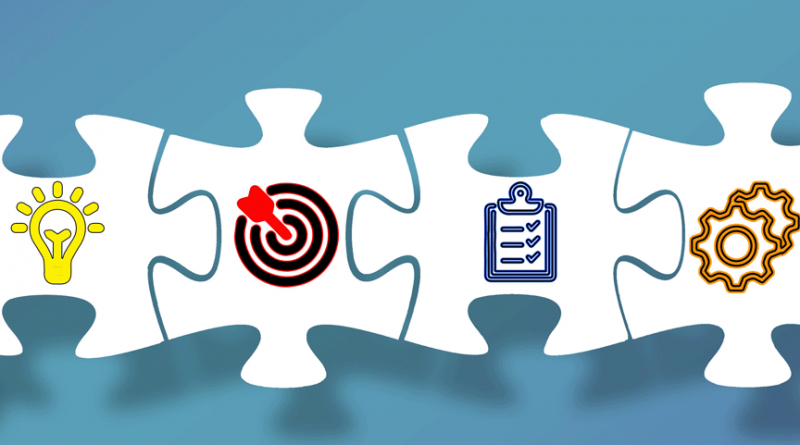Driving change
Dr Mike Cooray is Professor of Strategy and Transformation, Hult International Business School (Ashridge), and Dr Rikke Duus is Associate Professor and Research Fellow at UCL School of Management
They cannot rely on the historic insights, tacit knowledge, and practices of the past to make decisions about the future. IMF forecasts that global growth will slow from 6.0 percent in 2021 to 3.2 percent in 2022 and 2.7 percent in 2023, while we see turmoil in international trade, and increasing unease within the political landscape.
Therefore, it is of heightened importance for next-gen and senior leaders to actively acquire new insight and understand current forces that affect an organisation’s ability to operate, compete and thrive.
We believe that given the current complex and uncertain business environment, business schools can add significant value to organisations by enabling participants on MBA and other executive programmes to undertake an Applied Strategic Project (ASP) that is driven by participants’ investigations into key strategic issues.
There should also be the opportunity for executives to undertake an ASP independently, guided by business school academics and as part of their executive learning and CPD initiatives.
Applied Strategic Projects
Applied Strategic Projects give participants and organisations current insight into their industry sector, the competitive landscape, and internal organisational opportunities and challenges, leading to actionable recommendations for the organisation to take forward.
An ASP is an in-depth, research-based project undertaken over a period of a few months by participants in the context of the organisation within which they work. Participating executives become ‘embedded’ researchers as they explore a relevant and clearly defined strategic business challenge occurring within or in relation to their organisation.
As such, participants have access to secondary data and strategic reports with the opportunity to conduct their own primary research, specifically related to the strategic challenge they are investigating.
Figure 1. Applied Strategic Project process

As the final outcome, participants submit a comprehensive report, which includes research evidence, detailed analysis, visualisations, mind maps and frameworks. The report is assessed and evaluated by academic faculty and presented to senior management.
During the development of the project, each participant is supported by a dedicated academic supervisor who provides ongoing feedback and guidance. When delivered as part of a degree programme, it makes up a significant proportion of the overall credits, typically 30% to 40%.
The ASP is designed to provide participants with contemporary research skills, the ability to analyse and make sense of complex data, to present persuasive arguments and deliver a set of evidence-based strategic recommendations to drive impact and change for the organisation and its key stakeholders.
Some business schools have moved away from this type of ASP on programmes such as postgraduate masters, MBA and Executive MBA programmes. This is often because these projects can be complex to deliver and resource-intensive to manage, especially with large cohorts. When the project is removed from programmes, it is typically substituted with multiple smaller taught modules, specialist electives or a group-based project.
Given the current global challenges, businesses must re-set their strategic approach, accelerate innovation, enhance internal and external collaboration, and embrace digital technology to reach wider audiences and optimise operations
The Applied Strategic Project process
In the following, we share our insight and experience of how to design ASPs with the aim of equipping participants with the ability to design, plan and execute complex research- based projects that drive new value and accelerate change for their organisations.
Our research with participants who have completed the ASP shows that the vast majority feel they have enhanced their ability to collect, analyse, and make sense of primary and secondary data, write persuasive strategic proposals, and develop well-supported academically underpinned arguments.
They also highlighted the enhanced confidence they have gained by reaching out to senior managers and other colleagues within the wider ecosystem and thereby being able to help drive innovation and change within their organisations.
Figure 1 highlights the four key stages of the ASP process, which entails:
1. Scoping and gathering insights
2. Undertaking critical analysis
3. Engaging in critical discussions and debates
4. Driving change through value creation
Before the ASP kicks-off, we support participants through a 2½ day Virtual Live Session which focuses on scoping the project, defining the objectives, and selecting appropriate research methods and data collection techniques.
This is followed by multiple live webinars that help participants to extract insight from academic literature, collect and analyse primary data, write an impactful critical discussion, and bring new insight together to make viable recommendations for change and innovation.
Participants are also assigned a dedicated academic supervisor who engages with the participant through a series of structured dialogue meetings. These meetings are used to discuss progress, share recommended insights, and guide the participant on the next steps.
This role is critical for participants to make sustained and proactive progress towards the completion of the project. To assist the participant from the ‘inside’, they are also supported by an organisational mentor, who helps the individual with access to research participants, assists with identifying existing secondary data and reports available within the organisation, and meets with the participant to share progress.
A key strength of the ASP is that it is delivered online using multiple digital tools and platforms, combining synchronous and asynchronous guidance, content, and discussions. This provides busy executives the flexibility they need to complete an ASP alongside their busy work schedules and personal commitments.
Moreover, participants from across geographical regions can be offered the opportunity to undertake an ASP and be encouraged to form virtual self-managed study groups, helping to inject cultural and contextual learning.
1. Scoping and gathering insights
When starting an Applied Strategic Project, one of the first tasks is to scope the research area and determine what the ASP will set out to explore. This can be a challenging task as participants often wish to focus on a number of different strategic challenges facing the organisation.
It is therefore critically important that an effort is made to converge on exactly the key strategic challenge that will be investigated. Participants can assess possible project viability by considering their access to primary and secondary data, relevance to the organisation, timescales, and feasibility amongst other consideration criteria.
We suggest that an ASP must not have more than 3 to 4 objectives. These objectives usually start with verbs such as, ‘Explore’, ‘Identify’, and ‘Understand’, followed by ‘Design’, ‘Develop’ and ‘Recommend’. This approach enables participants to first ascertain the ‘current state’ and the challenges facing the organisation; and then subsequently determine and recommend implementable strategic actions to drive change and develop new value.
Once the objectives and expected deliverables are set, participants have a clear ‘lens’ through which they can gather secondary data from reliable sources. As a first step, we recommend that participants access secondary data from sources such as the Office for National Statistics, the OECD, the World Economic Forum, the World Health Organisation and other such reliable data-rich sources, before tapping into their own organisations’ annual reports, strategic plans and other readily available datasets.
This engagement with secondary data with the aim of mapping out current trends, drivers of change and other important shifts affecting the organisation, helps the participant to plan their collection of primary data.
We encourage participants to use well-established data collection methods, such as in-depth interviews, focus groups and surveys, but also highly recommend the use of more dynamic tools, such as photo-elicitation, digital diaries and virtual collaboration boards.
These enable participants to dive deeper into relevant issues and understand contemporary challenges. Depending on the research area, typical research participants include senior colleagues, front-line staff, external partners, customers, and other ecosystem contributors.
This encourages participants to go beyond their immediate department or working environment, expanding their spheres as they engage with colleagues, partners, competitors, and other stakeholders. From this, they gain a broader understanding of internal and external complexities, which is essential when working in a dynamic and fast-evolving environment.
Planning and undertaking primary research are central to the ASP as it enables participants to gather original and up-to-date insight that is specifically relevant to their set research objectives.
2. Undertaking critical analysis
The second stage of the ASP process requires participants to make sense of the primary and secondary data they have gathered. Data collected through quantitative methods, such as surveys, is analysed using advanced Excel and by using statistical packages such as SPSS.
For qualitative data, it is customary to use a multi-filter theme analysis, which helps participants to delve deeper into the opinions, perspectives, and experiences of their research participants and extract key themes.
The ability to make sense of complex data is an essential skill for emerging and senior leaders to acquire, especially when operating in a constantly changing environment. Many participants undertaking an ASP have not had the opportunity to acquire such skills prior to their study programmes and these skills are not typically developed to this extent by undertaking a series of taught modules.
Importantly, when participants design, develop and undertake their own collection and analysis of data, they can engage deeper in the process of sense-making and can contextualise their findings to their own organisation’s sector.
Whilst participants undertake their own research, they also acquire new knowledge from reading academic and practitioner-focused journal articles on topic areas that relate to their ASP.
These topics could be ‘driving innovation and change’, ‘strategic planning and competitiveness’, ‘leadership and organisational behaviour’, and ‘digital transformation and new competence development’, to mention a few.
We recommend peer-reviewed journal articles that are written with the practitioner in focus from journals such as Harvard Business Review, Business Horizons, Journal of Business Research, California Management Review and MIT Sloan Management Review, typically published in the last 2-3 years.
Participants broaden their understanding and proactively move beyond their own assumptions, tacit knowledge, and specific organisational context, to identify how the key issues they are exploring are also affecting other organisations and why that is. These new perspectives help to inform and shape the debates participants have as they come to present their key themes of discussion, aligned to the set research objectives.
3. Engaging in critical discussions and debates
In the third stage of the Applied Strategic Project process, the focus is on bringing together the most relevant insight gathered from the analysis of the secondary and primary data and the engagement with academic literature.
This is a critical part of the ASP and is often the most challenging for participants. Here, participants return to the previously set research objectives and use these to guide the discussion, typically organised in 3 or 4 main themes.
Importantly, the key arguments participants put forward need to be underpinned by the insights previously gathered and analysed. The credibility of this part of the project is reliant on the participant’s ability to generate evidence-based discussions and debates, which can lead to the presentation of viable proposals and recommendations for change initiatives and innovation within the organisation.
In this part of the ASP, participants can include creative and visualised outputs, central to presenting the key arguments in their critical discussion. We encourage participants to use digital tools and software, such as Mural and Flourish, to create these visualisations.
This has led to comprehensive, impactful, and interactive partner ecosystem maps, using Kumu.io, and detailed customer and patient journeys mapped out with Lucidchart.
Using such digital tools assist participants to communicate and share their new insight effectively and help them to pinpoint where new strategic and operational opportunities for the organisation may exist.
Importantly, participants acquire new digital skills and competencies, which they can take forward into their day-to-day work.
4. Driving change through value creation
As ASPs are comprehensive and underpinned by secondary data, primary data, and academic literature, they are effective in pushing forward change and innovation within organisations. We have seen many examples of how participants have gone on to implement their recommended strategic initiatives that have emerged from the ASP.
Many participants who undertake the ASP have successfully presented to their board of directors to secure the funding required to implement their proposals and have been able to garner support from cross-functional teams for the execution.
Along the way, participants have acquired new skills and competencies that enable them to launch and execute strategic action faster and in a more structured manner, heightening the rate of success for their organisation. The rigour of the ASP provides much required confidence amongst the completers to drive change and lead from the front.
It is also not uncommon for participants to achieve career progress during or upon completion of the project. Many gain heightened visibility and exposure within their organisation, often from their engagement with senior leaders who take part as research participants, but also from the opportunity to present and share new strategic initiatives.
Equipping next-gen leaders
Applied Strategic Projects can be used as a versatile tool for organisations to develop new products, services, and solutions, explore innovative business models, scan the wider ecosystem for ‘white spaces’, and develop cross-functional teams across regions.
The ASP can also be an effective way to support next-gen leaders, especially when undertaken in a triangular format, supported by an external academic and an internal mentor.
Given the current global challenges, businesses must re-set their strategic approach, accelerate innovation, enhance internal and external collaboration, and embrace digital technology to reach wider audiences and optimise operations.
ASPs can be the vehicle to test and experiment, while equipping the next-gen leadership cadre with the essential skills and knowledge required to drive change at pace.
A significant challenge that stands against the ASP, especially when embedded within postgraduate degrees and MBAs, is the cost of delivery. This leaves business schools with an informed decision to make about the value ASPs deliver to participants and their organisations versus the cost to the institution to offer them.
While ASPs will often be more costly to deliver than a series of taught modules, the credibility of the degree programme and the institution will, no doubt, benefit significantly from the success of those who complete the project and go on to accelerate organisational change and innovation and take on new leadership roles.
These individuals will help to carry the academic institution’s reputation forward by being respected alumni who will contribute positively to their own organisations and drive wider societal change in years to come.
This article was originally published in Global Focus Magazine.




